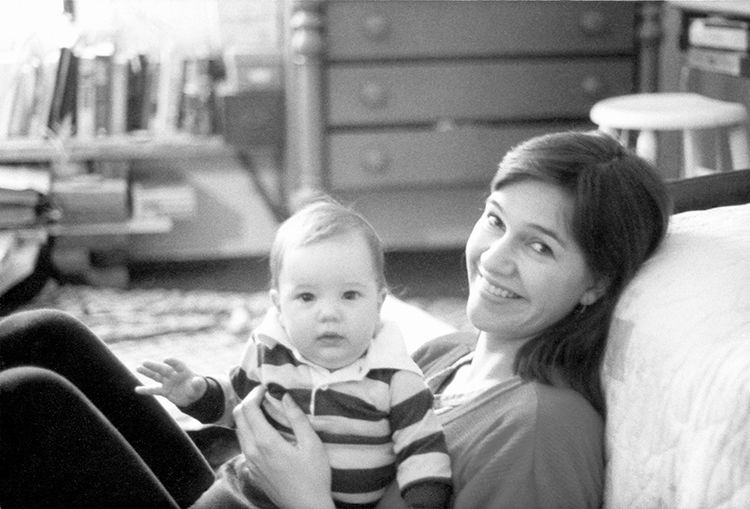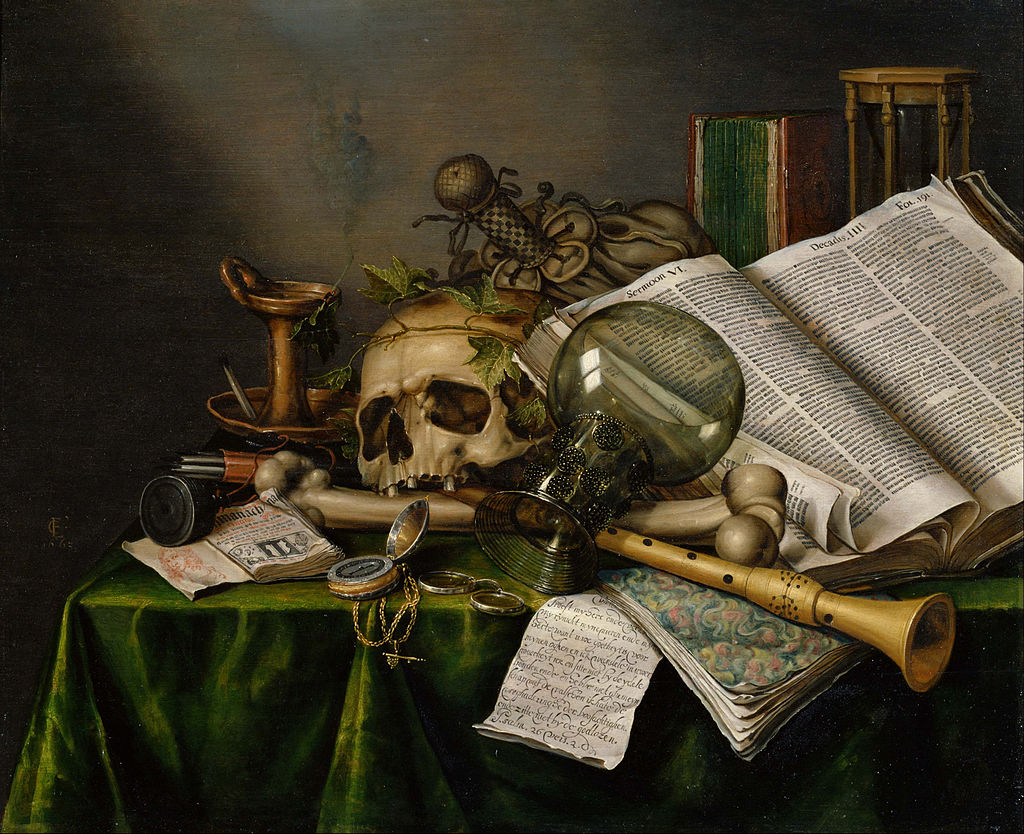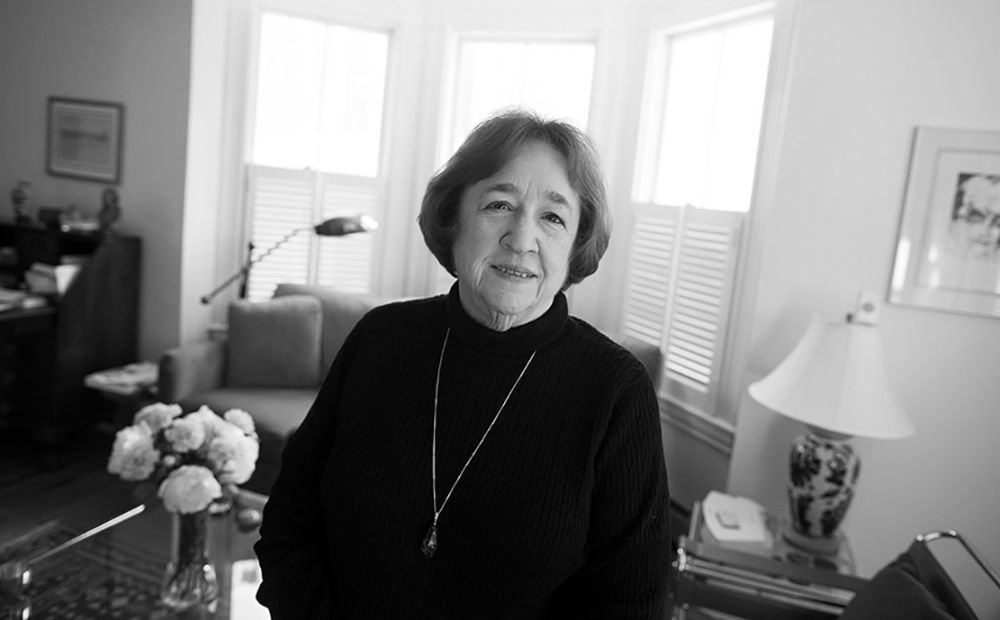Issue 195, Winter 2010
O

Only one passenger train per day makes the Empire Builder journey from Chicago to Seattle, and when it stops in Fargo, North Dakota, at 3:35 in the morning, one senses how, as Louise Erdrich has written, the “earth and sky touch everywhere and nowhere, like sex between two strangers.” Erdrich lives in Minneapolis, but we met in the Fargo Econo Lodge parking lot. From there, with Erdrich’s eight-year-old daughter, Kiizh, we drove five hours up to the Turtle Mountain Chippewa reservation, on the Manitoba border. Every August, when tick season has subsided, Erdrich and her sister Heid spend a week in a former monastery here to attend the Little Shell Powwow and to conduct a writing workshop at the Turtle Mountain Community College. One afternoon, participants took turns reciting poetry under a basswood tree beside the single-room house where Erdrich’s mother grew up. Another day, they ate homemade enchiladas and sang “Desperado” and “Me and Bobby McGee,” accompanied by a fellow workshopper on the guitar. In class, the writing is personal, the criticism charitable. It helps that Erdrich does the exercises, too—reading out the results in her mellifluous, often mischievous voice. In tidy fulfillment of an assignment entitled “very short fiction,” she wrote, “You went out for the afternoon and came back with your dress on inside out.”
Karen Louise Erdrich, born June 7, 1954, in Little Falls, Minnesota, was the first of seven children raised in Wahpeton, North Dakota, by a German American father and a mother who is half French, half Ojibwe—Ojibwe, also known as Chippewa, being one of six Native American tribes comprised by the Anishinaabe (“Original People”). Both of Erdrich’s parents taught at a Bureau of Indian Affairs boarding school. For many years, her grandfather Patrick Gourneau was the Turtle Mountain Chippewa tribal chair.
Erdrich was in the first coed class to attend Dartmouth, where she studied English and met her eventual husband, Michael Dorris, another writer and the founder of the college’s new Native American Studies program. Shortly after receiving an M.F.A. in creative writing from Johns Hopkins, Erdrich wrote “The World’s Greatest Fishermen,” a story about the hypothermia death of June Kashpaw, an Ojibwe divorcée whose funeral summons relatives home to a fictional North Dakota Indian reservation. “Fishermen” won the Nelson Algren short-fiction prize and became the first chapter of Love Medicine, Erdrich’s debut novel and winner of a 1984 National Book Critics Circle Award. Since then, she has written twelve more novels (including The Crown of Columbus, coauthored by Dorris), three books of poetry, three books of nonfiction, dozens of short stories, and five children’s books. Four of these books she illustrated herself. With Dorris, who was also her first literary agent, she raised three adopted and three biological children before the couple separated in 1995; two years later, Dorris committed suicide.
Erdrich returned to Dartmouth in June of 2009 to receive an honorary doctorate of letters and deliver the main commencement address; the same year, her novel The Plague of Doves, which centers on the lynching of four Indians wrongly accused of murdering a white family (and which Philip Roth has called “her dazzling masterpiece”), was named a finalist for the Pulitzer Prize. After invariably classifying Erdrich as a Native American writer, many reviewers proceed to compare her work to that of William Faulkner or Gabriel García Márquez: Faulkner for her tangled family trees, her ventriloquist skill, and her expansive use of a fictional province no less fully imagined than Yoknapatawpha County; García Márquez for her flirtations with magical realism. But so strange are Erdrich’s narrative rhythms, and so bonded is her language to its subject matter, that it seems just as accurate to call hers a genre of one.
When the workshop was over, Erdrich drove us back to Fargo for walleye cakes at the Hotel Donaldson, and then to visit her parents, who still live in the modest house in Wahpeton where Erdrich grew up. The next day, while Erdrich attended a wedding in Flandreau, South Dakota, her sister took me the remaining two hundred miles to Minneapolis, where, three days later, Erdrich and I reconvened at her bookstore and Native American arts shop, Birchbark Books. Here, Erdrich’s eldest daughter, Persia, decides which children’s books to stock. Taped to most of the shelves are detailed recommendations handwritten by Erdrich herself. An upside-down canoe hangs from the ceiling, suspended between a birch-bark reading loft and a Roman Catholic confessional decorated with sweetgrass rosaries. We linger at the store, but not until we make the long walk to Erdrich’s house do we finally sit down on the back porch and turn the tape recorder on.
Erdrich was wearing her driving clothes: jeans, sandals, and an untucked button-down shirt. A Belgian shepherd named Maki dozed at our feet, and Erdrich’s youngest daughter came out a couple of times—once to ask whether we wanted Play-Doh ice-cream cones, later to report that a Mr. Sparky was on the phone. Then a neighboring buzz saw started up, and we moved inside: up to a small attic room pleasantly cluttered with photographs, artifacts, and many more Catholic and Ojibwe totems, including moccasins, shells, bells, dice, bitterroot, a bone breastplate, an abalone shell for burning sage, a turtle stool, a Huichol mask with a scorpion across its mouth and a double-headed eagle on its brow, and a small army of Virgin statuettes. Crowded into a bookshelf beside a worn armchair in the center of the room are the hardbound spiral notebooks in which, in a deeply slanted longhand, Erdrich still writes most of her books—sitting in the chair with a wooden board laid across its arms as a desk.
INTERVIEWER
In The Beet Queen, Dot Adare’s first-grade teacher puts Dot into the “naughty box.” Was there a naughty box in your own childhood?
ERDRICH
Do I have to talk about this? It is a primal wound. Yes, I was put into the naughty box.
INTERVIEWER
What had you done?
ERDRICH
Nothing. I was a model child. It was the teacher’s mistake I am sure. The box was drawn on the blackboard and the names of misbehaving children were written in it. As I adored my teacher, Miss Smith, I was destroyed to see my name appear. This was just the first of the many humiliations of my youth that I’ve tried to revenge through my writing. I have never fully exorcised shames that struck me to the heart as a child except through written violence, shadowy caricature, and dark jokes.
INTERVIEWER
Was your teacher anything like the one in your story “Sister Godzilla”?
ERDRICH
No, but I had Franciscan Sisters for teachers later. Some were celestial, others were disturbed. My sixth-grade teacher, Sister Dominica, hit home runs at recess and I loved her, but there was no exact Sister Godzilla. As for Miss Smith, I still have her photograph. She had cat’s-eye glasses, a blond bouffant do, and wore a chiffon scarf tied at the tip of her chin. I’d been reading for a while before Miss Smith, but I’d never thought about how there’s a presence inside of words. The Ojibwe say that each word has a spirit. Miss Smith drew eyelashes on the o’s in look, and irises in the middle of the o’s, and suddenly look contained the act of looking. I had a flash of pure joy.
INTERVIEWER
Is it true your father paid you a nickel for every story you wrote as a child?
ERDRICH
Yes, he did, and he’s sick of hearing about it. It’s also true that, about a year ago, he gave me a roll of antique nickels and said, I owe you.
INTERVIEWER
What were the stories about?
ERDRICH
Lonely girls with hidden talents. At a family white-elephant sale we auctioned off one of my early stories for eight bucks—someone else got it. I’ve been trying to buy it back.
My father is my biggest literary influence. Recently I’ve been looking through his letters. He was in the National Guard when I was a child and whenever he left, he would write to me. He wrote letters to me all through college, and we still correspond. His letters, and my mother’s, are one of my life’s treasures.
INTERVIEWER
What are they about?
ERDRICH
Mushroom hunting. Roman Stoics. American Indian Movement politics. Longfellow. Stamp collecting. Apples. He and my mother have an orchard. He used to talk about how close together meadowlarks sit on fence posts—every seventh fence post. Now, of course, they are rare. When I went off to college, he wrote about the family, but in highly inflated terms, so that whatever my sisters and brothers were doing seemed outrageously funny or tragic. If my mother bought something it would be a cumbersome, dramatic addition to the household, but of course unnecessary. If the dog got into the neighbor’s garbage it would be a saga of canine effort and exertion—and if the police caught the dog it would be a case of grand injustice.
INTERVIEWER
How did your parents meet?
ERDRICH
My mother is Turtle Mountain Chippewa, and she lived on her home reservation. My father taught there. He had just been discharged from the Air Force. He went to school on the GI Bill and got his teaching credentials. He is adventurous—he worked his way through Alaska at age seventeen and paid for his living expenses by winning at the poker table. He saved the money he made as a cook’s flunky and helped out his parents. After he got his credentials, I guess he thought it would be interesting to work on a reservation. He assumed there would actually be mountains in the Turtle Mountains, so he brought his skis. In fact, on the way there, he looked north and saw cloud formations on the horizon and thought they were mountains. But when he arrived he found that the Turtle Mountains are low hills—no skiing. He met my grandfather before he met my mother.




